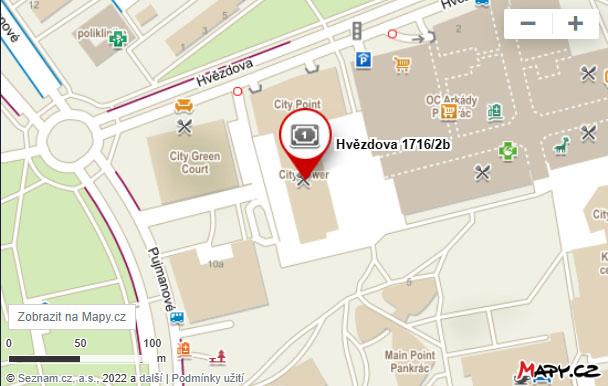Automation has long been associated mainly with large, international manufacturing companies, while automotive and electronics are considered automation-leading industries… Industry 4.0 strategy has grown over the years into a giant elephant, hard to capture and very complex phenomenon hard to understand for “normal human beings,” to the thing that is being spelled every day in media, conferences, and discussions as a term. Still, many people can hardly explain what it is about in reality. The assumed complexity and wideness of Industrial Automation, Robotization, and Digitalization have led to numerous myths and misconceptions, making it hard to adapt and utilize in Small & Medium Enterprises (SMEs) daily life. What a misunderstanding! The instantly growing need for Automation applies to all businesses, regardless of industry, size, or location. One of the significant challenges these days seems to be the demystification of Automation in the SME segment, as it is urgent. Because these companies also need smoother workflow management, supply planning, more efficient logistics management, robotizing standardized processes, optimizing maintenance costs, reducing stored spare parts, and reducing the time from initial idea to product launch along with overcoming workforce shortage and better utilization of worker’s potential to increase productivity, flexibility, and consistent quality.
Multiple different (and popular) “SME Myths” related to Industrial Automation exist. We can hear them in Hungary and neighborhood countries in Central & Eastern Europe. Let’s name some of them: Our company is too small for automation. Our processes are so specific that and cannot be automated. Investment in Automation will not bring additional economic benefits. Robotization is beyond our financial capabilities. We do not see a need for automation as we’ve lived successfully without it until now. I cannot find enough qualified workers to elevate our production to the next level. Robotization is taking jobs from people and making them jobless.
One of the well-accepted indicators of automation is called “Robot density,” which represents the number of industrial robot units utilized in the country per 10 000 employees.
World Robotics 2021- Industrial Robots Report issued by the International Federation of Robotics (IFR), 2020 density figures in Europe look interesting – Germany 371, Sweden 289, Denmark 246, Italy 224, Netherlands 209, Spain 203. Slovenia 183, Slovakia 175, Czech Republic 162, Hungary 120. These numbers clearly show that Central & Eastern Europe countries are barely above half of the “more developed” European countries. While looking more into the reasons, some are noticeable – more expensive vs. cheaper workforce and the economic strength of the companies, to name a few. A hidden driver of higher density here is the adoption of automation across Small and Medium Enterprises and a wide range of productions in those countries … countries with higher productivity, efficiency, and better utilization of human workforce capital.
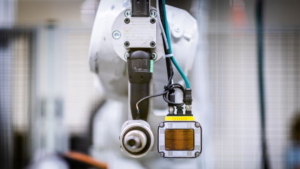
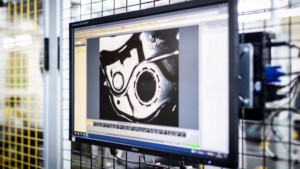
Isn’t it a good argument for the myth of “being too small”? Why are small companies in Sweden, Spain, or Germany not too small, and do they invest in intelligent automation solutions? The reason may be simple – they want to be competitive, efficient, and profitable; therefore, investing in automation drives their competitiveness, efficiency, and flexibility.
We may agree to some extent that some of the manufacturing processes are unique and hard to automate; however, many tasks, operations, and techniques are relatively every day and have already been automated, digitalized, and robotized in hundreds of production facilities around the globe successfully, binging already competitive advantages. There are many ways to get inspired … talking to professionals in the automation business or just spending quality time on Youtube, where virtually everyone can find real-life examples of applications that match his needs and solve his business or production challenges.
Also, myths related to the workforce deserve some clarification. Automation, digitalization, and robotization are not making people jobless. Point. These days, employers need a more available force, which is one of the limitations for growing their business and reaching new opportunities and markets. In such a situation, the solution is to release people from “DDD” (dull, dirty, dangerous) tasks or jobs and assign them to the position more utilize their human potential. Capabilities: They can develop their skills and deliver more for the company by increasing productivity, efficiency, and value add. It supports the resolution of another challenge many companies face nowadays – not having enough workers with the required qualifications. As such people are unavailable and will probably hardly be soon, the way forward is better utilization, development, and emblement of the workers already working for the company. How? Obviously, by automation, digitalization, or robotization of DDD jobs.
The number of myths is also related to the financial side of the story. Experience shows that ROI for intelligent automation solutions can typically be between 3 months and two years, depending on numerous factors, which is okay. Moreover, wise investment in automation, robotization, and digitalization seems to be a must since it brings significant competitive advantage, increases productivity, and enables manufacturers to produce more with the same amount of headcount, moving from two shifts to three shifts operations without increasing headcount, improving quality assurance, eliminating scrap improving time to market and increasing flexibility to change production as per new opportunities and changing demand. So, investment here is not an investment in automation as such but an investment in the success and future of the company, as otherwise, it will, sooner or later, lose its competitiveness.
Automation and digitization make it easier for manufacturing companies of all sizes to compare competing products, simplify the purchasing process, and shape a completely different operation of production and logistics. They leave their mark practically everywhere, most visibly when deploying automated and cybernetic systems in production processes. I.e., they are replacing routine manual operations in production by implementing automated production or assembly lines. The main advantage is saving production costs; thus, reducing the price per piece without lowering the quality is possible. On the contrary, automated and robotic lines significantly reduce scrap and allow more parts to be produced. We know from experience that a computerized assembly line has up to 97% quality success. This solution suits all sizes because each answer is customized to customers’ needs. One of our companies in the holding, Automa CZ, produces single-purpose machines, robotics stations, and assembly lines according to the customer’s unique needs and requirements, which isn’t standard on the market.
In automation, there is also a typical situation where production may change to another product after several months or years. This can be well addressed in advance by the intelligent design of the machine, station, or entire line, keeping in mind future needs for production changes to be efficiently adapted to the new requirements and redesigned in the future, including custom re-programming by our engineers from Auware Engineering.
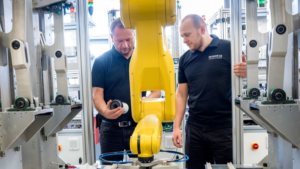
Automation in a manufacturing company mainly concerns production and intralogistics. In the field of intralogistics, the introduction of automation is crucial. The solution is comprehensive for overall logistics, inventory management, and records.
In today’s fast-changing world, digitized, paperless, lean processes and traceability of goods and equipment are needed more than ever. Unique logistics solutions cover the entire supply chain and enable full tracking of goods, raw materials, and semi-finished and finished products. This requires automated identification systems (Auto-ID).
Let’s take automation and digitalization of business and operational challenges related to intralogistics as an example of how simple, pragmatic, and intelligent approaches to these challenges may be.
Manufacturers can implement auto-ID systems in any industry and size (automotive, retail, wholesale, FMCG, pharmaceutical, transportation, electronics, paper, and 3PL …).
Smart utilization of this technology also significantly contributes to the development of digitized paperless so-called brilliant production and meets the requirements of Industry 4.0.
Antra ID from the Central European Automation Holding group is a leader in this field and solution. Since 1990, Antra ID has been designing, implementing, and servicing automatic identification systems (Auto ID), most often using RFID technology. RFID (Radio Frequency Identification) technology is an RTLS technology that enables tracking, tracking, and monitoring of different moving objects.
In some cases, applying RFID technology can enable a more productive operation than with barcode-based systems since, for RFID, there is no need for a direct visual relation. Each time it produces higher data throughput than barcode technology.
Thus, the following benefits can be achieved: Time reduction in data processing & more efficient data entry processes. During the operation of the RFID technology, the reader unit (antenna, sensor) induces an electromagnetic field with pre-defined parameters. Using the electromagnetic field generated by the reader, the RFID tag passes the embedded information to the data processing system via digital signs by modifying the broadcast signal. Afterward, the data is processed by different systems like warehouse management systems (WMS), Enterprise resource planning systems (ERP) based on business logic (store, process). The RFID gate is installed equipment designed and implemented by our company based on the project specification. Each solution is tailored according to the customer’s production size or stocks.
If we take the essential records of receiving and issuing goods from the warehouse, there is often a loss of goods due to outdated paper records. A common mistake is incorrectly registered interests on the paper notebook or, in better cases, in the not very sophisticated application, placement on a shelf where they should not be placed, and poor records during dispensing and progress to production. There is already a demonstrable loss of goods in the records. The usual inventory of stocks then takes place so that the employees physically count each piece and compare the condition with the paper records. The difference between the actual state and records can be up to millions of EUR, hurting the company’s financial results.
Therefore, the solution is overall digitization, where the goods are equipped with an RFID chip at the entrance to the warehouse, and antennas are placed at the entry and exit of the warehouse, which captures the information and transfers it to the system. The inventory takes place only with the help of electronic warehouse records from the system and RFID readers.
Whether the company has new or older machines in production, keeping spare parts in stock is necessary. These parts can be equipped with an RFID chip, significantly reducing inventory by up to 60%. Efficient and controlled spare parts management is one of the cornerstones of the entire Production Risk Mitigation process.
Automating the ordering system and optimizing inventory is another significant benefit, as unplanned production stops can be eliminated due to missing materials or components. When a particular item in stock quantity falls below a certain level, an order is automatically sent to the supplier. It is usually necessary to send an e-mail to the supplier, which takes at least two and a half days.
Auto-ID solutions with RFID technology can be used as an example, i.e., intelligent service of production machines and tools, improving internal communication and saving time. The service technician receives a notification in a text message and then goes directly to a specific assembly line. The operator on the line reported a fault; he sent it through his PDA – while still standing at the machine. The implied system then immediately sent an automatic alert.
With an innovative solution and process, the operator can inform his supervisor and call a service technician whenever he has a problem. This process may easily take 15 minutes or more. With automated alerting response time, idle production time may be significantly reduced.
However, the most common use of Auto-ID with RFID technology remains asset inventory. For example, imagine production with several machines, test stands, and measuring instruments. Counting everything in production could take a month, and some areas had to be shut down. A list was printed, and workers went looking for items; sometimes, they had to crawl between the machines on their knees to find the stickers with the data they needed. This has completely changed with the introduction of the Antra ID system.
One worker can do such work in a few hours. All machines and equipment are equipped with RFID transponders. They walked over to the shop floor with a small trolley with antennas on the sides. The inventory list is downloaded from the network to the laptop; the trolley travels the aisles along a predetermined route. Gradually, more and more rows in the table start to glow green. This system saves up to 95 percent of employees’ time previously spent in the warehouse.
The exciting use of RFID is in production, where the material and raw materials at the entrance to the exhibit are sensitive to temperature fluctuations during handling. I.e., when leaving the warehouse from the supplier, transported to the manufacturer’s warehouse, and on receipt, temperature fluctuations due to incorrect storage during transport can damage and degrade the raw material crucial for the given production. How do we know that there have been temperature fluctuations? Usually, we open a box at the reception in our warehouse and see or feel the damage. Ie. Open all the boxes. The solution is Environment & Event Logging System from Antra ID. A semi-passive RFID Tag is placed in every environmentally sensitive good’s trunk. This Tag collects data from its environment (e.g., temperature, humidity…) each time. When the package arrives at the target warehouse, the RFID system warns that a sensitive material has just come, and the warehouse workers shall prioritize its delivery. After receiving the goods, the data can be read automatically and evaluated from the RFID Tag, ensuring the required material quality is not jeopardized by non-compliant storage and transport conditions.
System end-to-end tracking & tracing of temperature-sensitive products enables correct, auditable cooperation between supply chain partners, automated identification at predefined places and gates, and different external trigger events can be added to the log file. Customizable workflow solutions based on RFID and Barcode technologies, secure, locked information available only for authorized personnel, and overall, it is innovative FIFO solutions.
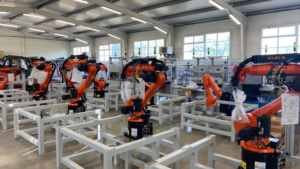
There are many ways to automate production and intralogistics processes, and this topic may initially seem complicated. However, the advantage of the European Automation Holding Center is that all these solutions are under one roof. We can offer the customer the best services, solutions, implementation, and service in these fields thanks to the synergy of specially trained consultants, designers, programmers, and technicians from Automa CZ, Antra ID, and Auware Engineering. By fully utilizing synergies, competencies, experience, and unique expertise within the group, our companies may well address any demand of our customers, from idea creation to design, innovation, programming, commissioning, and maintenance in critical areas of today’s automation, robotization, and digitalization challenges.

